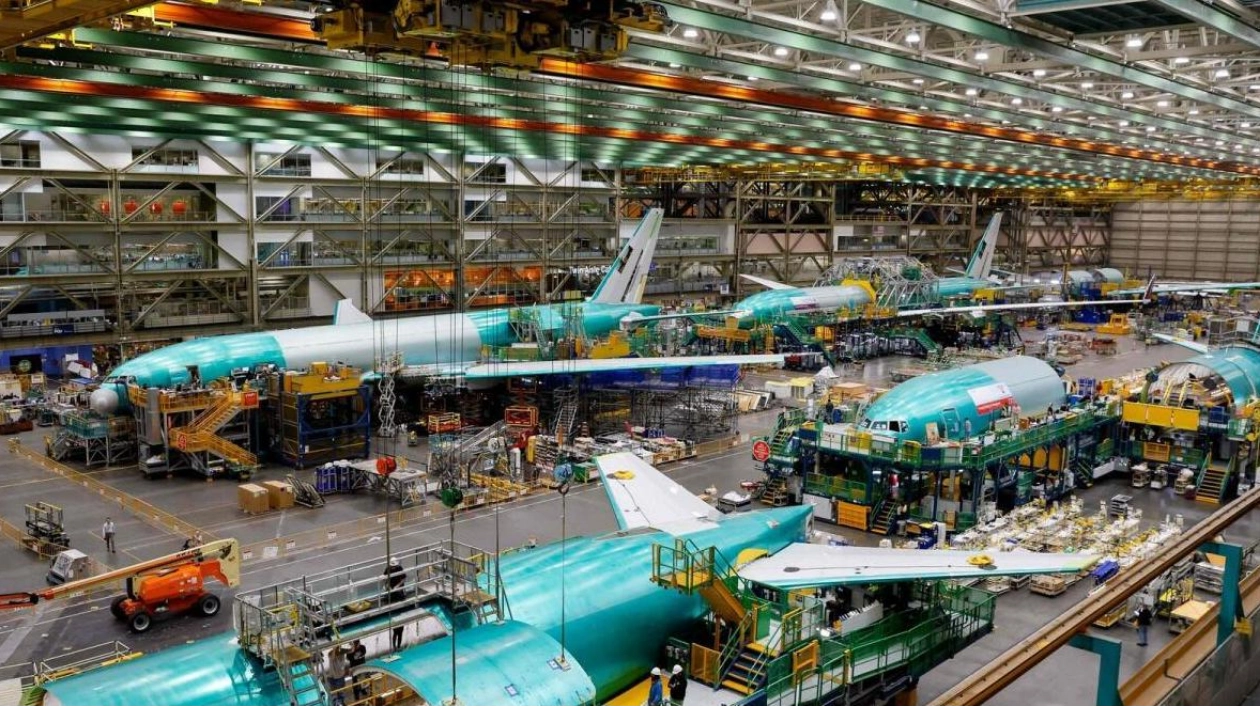In July, new orders for crucial U.S.-made capital goods unexpectedly declined, and data from the previous month was adjusted downwards, indicating a slowdown in business investment in equipment that persisted into the early stages of the third quarter. The Commerce Department's report on Monday also highlighted that the manufacturing sector remains stagnant amidst rising interest rates. Although orders for durable manufactured goods saw a significant increase last month, this was largely due to aircraft orders. Nonetheless, the rate of growth in business equipment investment is expected to support the ongoing economic expansion.
"The economy is not yet on the decline," stated Christopher Rupkey, chief economist at FWDBONDS. "Business investment in long-term core capital goods orders has slightly decreased at the beginning of the third quarter, but new orders do not suggest an economic recession for the broader economy." According to the Census Bureau of the Commerce Department, non-defense capital goods orders excluding aircraft, a key indicator of business spending intentions, fell by 0.1% last month following a downwardly revised 0.5% increase in June. Economists surveyed by Reuters had anticipated no change in these core capital goods orders after a previously reported 0.9% rise in June. Year-on-year, core capital goods orders increased by 0.5% in July.
Orders for machinery remained stable in July, while those for computers and electronic products decreased by 0.7%. Orders for electrical equipment, appliances, and components dropped by 0.4%. There were also declines in orders for primary metals. Conversely, orders for fabricated metal products increased by 0.2%. Core capital goods shipments decreased by 0.4% after remaining unchanged in June. Non-defense capital goods orders saw a rebound of 41.9%, following a 22.9% drop in June. Shipments of these goods increased by 4.7% after a 6.1% rise in June. These shipments contribute to the calculation of business spending on equipment in the gross domestic product report.
Business investment in equipment showed double-digit growth in the second quarter, with spending on goods generally holding steady despite significant interest rate hikes by the Federal Reserve in 2022 and 2023. This contributed to the economy's 2.8% annualized growth rate in the April-June quarter. After adjusting for inflation based on producer price data, economists estimated that shipments were below their second-quarter average. With the Institute for Supply Management and regional Fed manufacturing surveys indicating weak orders, a contraction in business spending on equipment is a possibility, according to economists.
"The outcome is that equipment investment is currently on track to achieve a modest 1.2% annualized increase in the third quarter, with overall GDP growth at 1.8%," said Paul Ashworth, chief North America economist at Capital Economics. Stocks on Wall Street were mostly trading lower. The dollar remained stable against a basket of currencies. U.S. Treasury yields decreased. Aircraft orders surged in July.
The U.S. central bank has kept its benchmark overnight interest rate within the current 5.25%-5.50% range for over a year. Fed Chair Jerome Powell signaled imminent rate cuts last Friday due to concerns about labor market weakness. Financial markets anticipate the Fed to start its easing cycle next month with a 25-basis-point rate reduction, although a half-percentage point cut cannot be ruled out. "We anticipate a rebound in capital expenditures as the Federal Reserve begins to reduce its target range for the federal funds rate, but it will take some time for the benefits of lower interest rates to impact the real economy," said Nicole Cervi, an economist at Wells Fargo. "Today's data confirms the ongoing trend that manufacturers are largely inactive until more accommodative policies are implemented and support widespread order demand."
Orders for durable goods, which include items from toasters to aircraft and are designed to last three years or more, jumped by 9.9% in July. This was the highest increase in four years and followed a revised 6.9% drop in the previous month. Durable goods orders were previously reported to have declined by 6.7% in June. They were boosted last month by a 34.8% rebound in transportation orders after a 20.6% drop in June, reflecting a 12.9% increase in defense aircraft orders. Motor vehicle orders decreased by 2.6%. The Census Bureau did not provide a month-to-month percent change in civilian aircraft orders and parts due to a negative value in the denominator.
Boeing reported on its website that it received 72 aircraft orders last month, a significant increase from 14 in June. However, cancellations are rising as the world's largest aerospace company addresses various issues, including safety concerns. "As a result of Boeing's recent challenges and also partly because the biennial Paris airshow was not held this year, aircraft cancellations exceeded new orders in June, with net new orders falling to -$4.2 billion last month," Ashworth of Capital Economics noted. "Commercial aircraft net orders rebounded to $23.4 billion in July, however, as buyers compensated for lost time at the Farnborough airshow, which is also held every two years."






